|
 Home:
Meeting
Highlights: Posters
Home:
Meeting
Highlights: Posters

Factors
Influencing Surgical Choices in Women with Breast Cancer
Valerie L. Staradub, MD, Yi-Ching Haleh, MS, Jennifer Clauson BS,
Alexander Langerman, BA, Alfred W. Rademaker, Ph.D., Monica Morrow,
MD
In the absence
of medical contraindications, survival after breast conservation
therapy (BCT), mastectomy (M), and M with immediate reconstruction
(MIR) is equal. Between 1995 and 1998, 587 women with DCIS or early
breast cancer with no contraindications to BCT or MIR were seen.
Of this group, 85.2% chose BCT, 9.2% M, and 5.6% MIR. We examined
demographic factors to see if they differed among groups using Fisher's
exact test.

Marital status
and employment approached significance (p=0.06), but family history
of cancer was not a predictor of treatment choice. Women undergoing
M alone were older and more likely to have stage II carcinoma than
those undergoing BCT. Patients undergoing M or MIR were more likely
to have had a prior breast biopsy than those choosing BCT. These
findings suggest a need for patient education strategies that emphasize
the lack of influence of age and prior breast biopsy on the use
of BCT. Differences in demographic variables may reflect true variations
in patient preference among groups, emphasizing the need to address
the spectrum of treatment options with patients.
To identify
demographic factors that influence surgical choices made by women
eligible for breast conserving therapy (BCT).
- 587 consecutive
women diagnosed between 1/95 and 12/98.
- Clinically
stage I or II invasive breast cancer (n=479) or DCIS (n=108).
- Clinically
eligible for BCT, mastectomy (M), or mastectomy with immediate
recon struction (MIR).
- Patients
viewed an informational video prior to an in-depth surgical consult.
Cases were reviewed by our multi-disciplinary breast cancer team.
- Women undergoing
mastectomy alone were older and more likely to have stage II breast
cancer than those undergoing BCT.
- Single women
and those employed outside the home were more likely to choose
BCT (p=0.06), but family history of cancer was not a predictor
of treatment choice.
- Patients
undergoing M or MIR were more likely to have had a prior breast
biopsy than those choosing BCT.
- Patient education
strategies need to emphasize the lack of influence of age and
prior breast biopsy on the use of BCT.
- Differences
in demographic variables may reflect true variations in patient
preference among groups, emphasizing the importance of discussing
surgical options with each patient.
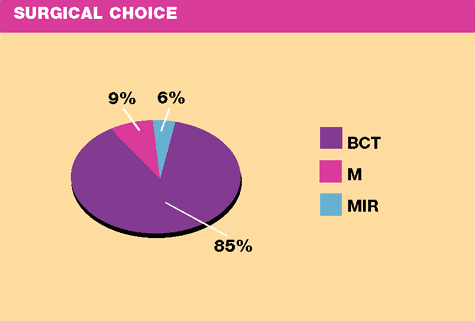
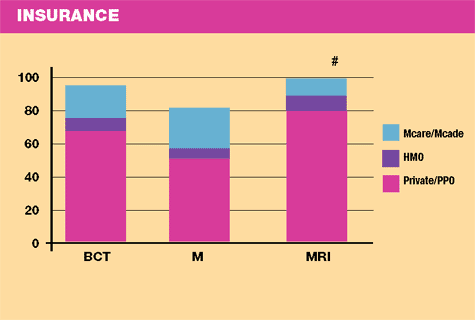
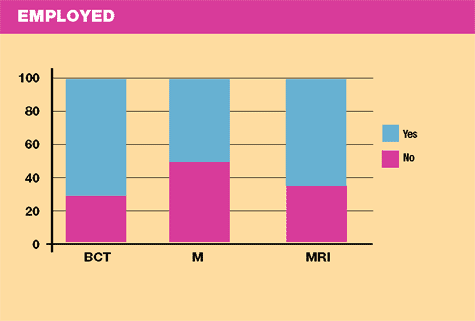
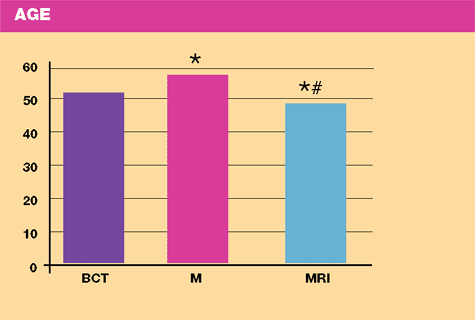


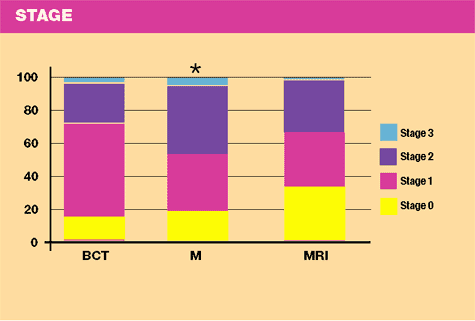
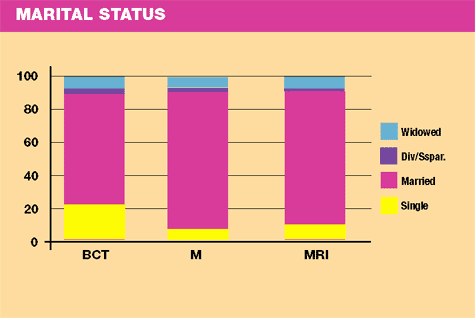
*p<0.05
vs. BCT
#p<0.05 MIR vs. M
Top
of Page
|



